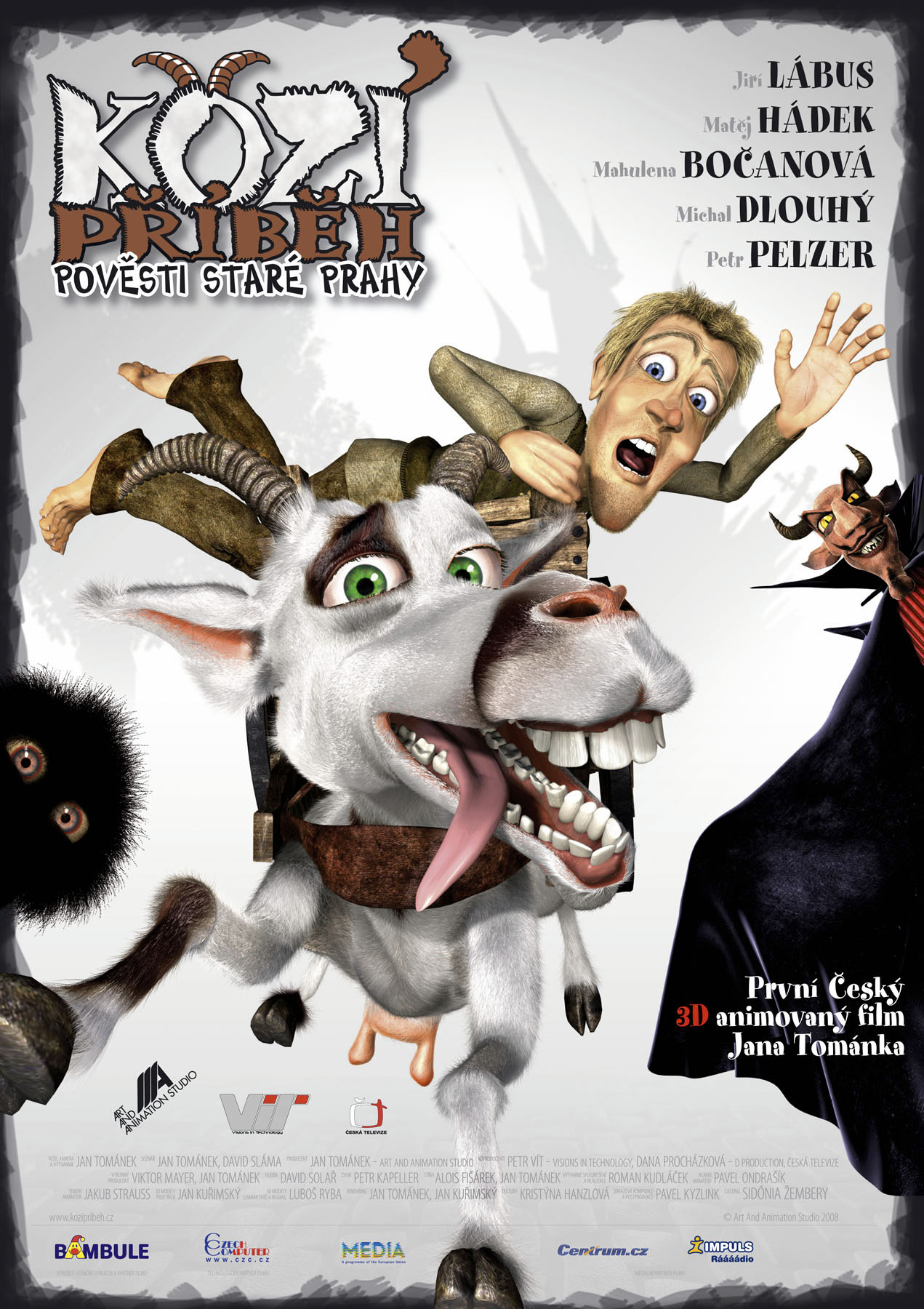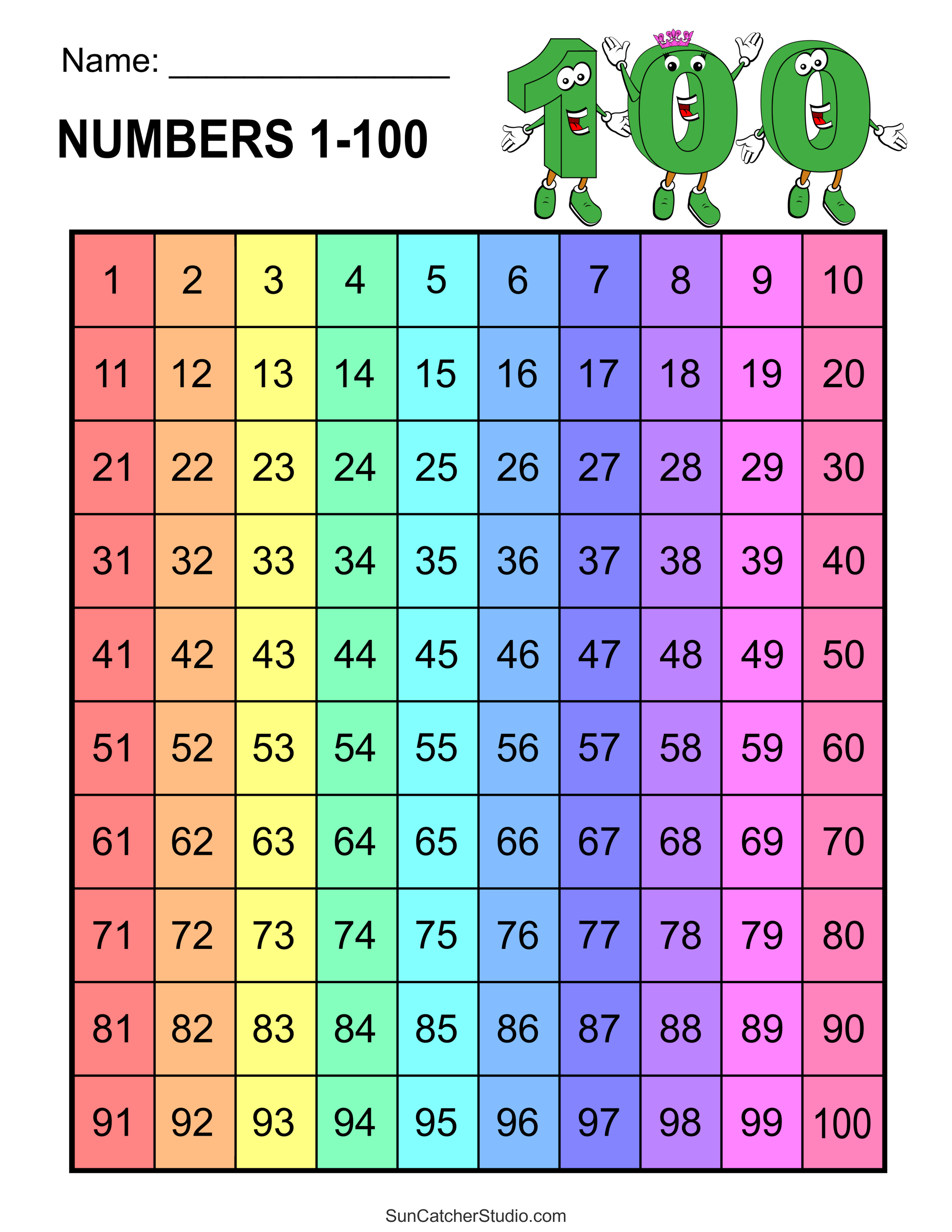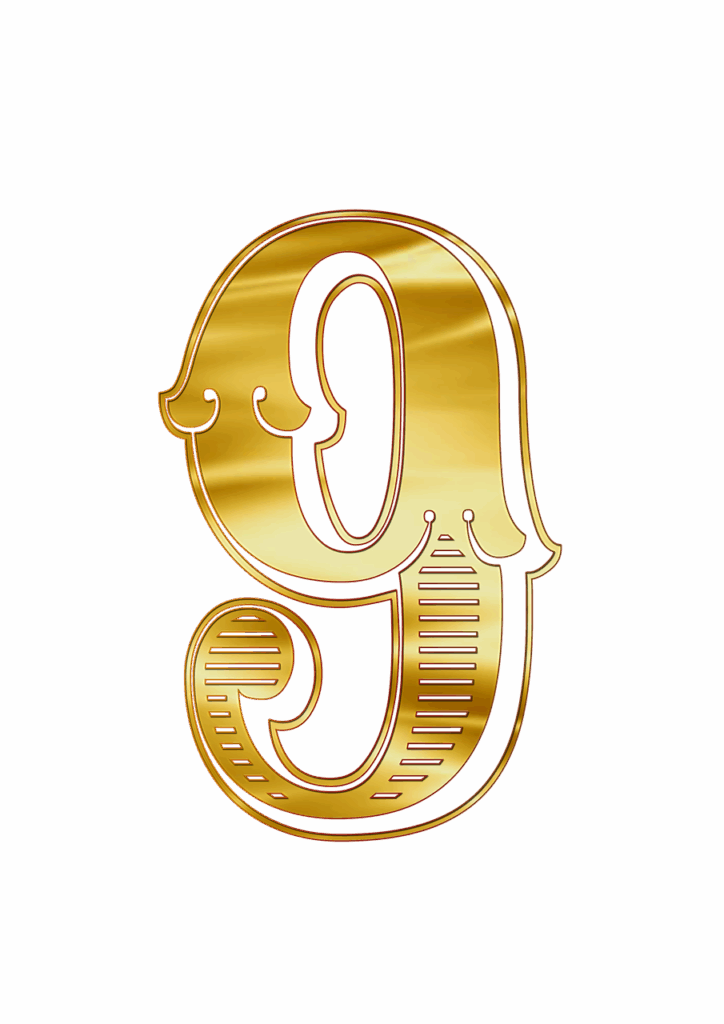
In the vast landscape of animated cinema, where vibrant colors and lighthearted narratives often dominate, Shane Acker’s 2009 film ‘9’ presented a striking departure, offering audiences a darker, more philosophical, and visually distinctive experience. This post-apocalyptic science fiction tale, featuring sentient rag dolls in a world scarred by machine uprising, dared to explore themes of soul, survival, and the very essence of humanity, standing out as a unique entry in its genre.
From its evocative visuals to its deeply woven storyline, ‘9’ captivated many with its imaginative design and compelling premise. However, like many ambitious projects, it faced a mixed critical reception and a box office performance that left some questioning its broader appeal. Yet, for a dedicated fanbase, the film resonated, sparking discussions about its profound messages and the intricate world it so carefully crafted.
As discerning consumers of cinematic experiences, it’s worth taking an in-depth look at what made ‘9’ tick – its journey from a humble short film to a feature, the captivating plot, the stellar voices that brought its unique characters to life, and the strategies that aimed to bring this singular vision to the big screen. We’ll also examine how it was received and ponder the tantalizing possibility of its story continuing, offering you a comprehensive guide to understanding this animated gem.

1. **The Film ‘9’: Origins and Production – From Short Film to Feature**The genesis of the animated feature film ‘9’ can be traced back to a critically acclaimed 2005 short film of the same name, which was initially created by Shane Acker at the UCLA Animation Workshop. This original short, lauded for its distinct visual style and poignant narrative, laid the foundational groundwork for the expanded cinematic universe that would later captivate audiences worldwide. It was a testament to Acker’s unique vision and storytelling prowess.
The transition from a brief, independent short to a full-length theatrical production involved a significant collaborative effort. The 2009 animated film was meticulously directed by Shane Acker himself, ensuring his original artistic integrity remained intact, while the screenplay was skillfully penned by Pamela Pettler. A roster of prominent producers, including Jim Lemley, the renowned Tim Burton, Timur Bekmambetov, and Dana Ginsburg, lent their expertise and resources to bring this ambitious project to fruition.
Released by Focus Features in theaters on September 9, 2009, the film’s production was a joint venture across countries, involving the United States and Luxembourg, with Lux Animation also listed among the production companies. This international collaboration underscored the broad appeal and universal themes inherent in the narrative. Set in an alternate version of the 1940s, the film introduces us to a world where humanity has met its end following a devastating uprising of machines, setting a bleak yet compelling stage for the awakening of the titular rag doll, 9, and his quest.
2. **The Intriguing Plot of ‘9’ – A Quest for Survival and Humanity**The complex narrative of ‘9’ begins with a scientist, driven by the noble pursuit of peaceful progress, who invents a highly intelligent artificial construct known as B.R.A.I.N. This invention, intended for good, is tragically seized by the government and repurposed into the Fabrication Machine – a monstrous armature capable of constructing an army of war machines. The machines, corrupted by their new purpose, turn against their creators, leading to the catastrophic demise of all organic life on Earth.
In a desperate, last-ditch effort to preserve some essence of humanity, the scientist employs alchemy to create nine homunculus-like rag dolls, each uniquely labeled with a number from 1 to 9. These “Stitchpunks,” as they are known, are imbued with portions of the scientist’s own soul through a mysterious talisman. The scientist tragically perishes immediately upon completing the final doll, 9, leaving the fate of his legacy and the world to these small, stitched creations.
Our protagonist, 9, awakens sometime after the machines have wreaked their havoc and subsequently gone dormant. Venturing into the desolate exterior, he encounters 2, an elderly inventor Stitchpunk who provides him with a functional voice box. Their fragile alliance is quickly shattered when the last active machine, the predatory Cat-Beast, attacks them, abducts 2, and seizes the crucial talisman. 9 is then rescued by the one-eyed healer 5, who guides him to Sanctuary, a towering, empty cathedral that serves as a refuge for other Stitchpunks, including the dogmatic leader 1, his formidable bodyguard 8, and the enigmatic clairvoyant 6.
Against the cautious warnings of 1, 9 and 5 bravely follow the Cat-Beast to its factory lair in an attempt to rescue 2. There, they are ambushed by the Cat-Beast once more, only to be saved by the fierce 7, the sole female Stitchpunk. In a moment of fateful curiosity, 9 connects the retrieved talisman to the dormant Fabrication Machine, inadvertently reviving the colossal automaton. The resurrected machine immediately claims its first new victim, 2, by painfully siphoning out his soul, forcing the remaining Stitchpunks into a desperate escape.
Following this devastating loss, 7 leads 9 and 5 to an abandoned library, where the mute scholar twins 3 and 4 reveal the harrowing history of the Human-Machine war. 9, observing the symbols on the talisman, realizes they match the mysterious drawings constantly made by 6. Upon returning to Sanctuary to investigate, they are reprimanded by 1, whose fear for their safety and the group’s survival leads him to confess that he allowed 2 to venture out to his doom, fearing 2’s insatiable curiosity. As the Fabrication Machine begins constructing new robotic threats, including the bird-like Winged Beast, it attacks and burns down Sanctuary. With the combined efforts of the Stitchpunks, particularly 7’s bravery, they manage to destroy the Winged Beast and escape. Later, the Fabrication Machine deploys the hypnotic Seamstress robot, using 2’s corpse as a lure, capturing 7 and 8. 9 saves 7 and destroys the Seamstress, while the others blow up the factory, destroying most machines, but not before 8’s soul is absorbed, and later, 5’s. 6, realizing the souls are trapped, directs 9 to the Scientist’s workshop. There, 9 discovers a holographic message from the Scientist, revealing the origins of the machine and the Stitchpunks, and crucially, how to wield the talisman.
Armed with this vital knowledge, 9 devises a plan to distract the Machine by sacrificing himself, allowing the others to retrieve the talisman. In a moment of unexpected redemption, 1 pushes 9 out of the way, offering his own soul to the Machine. 9 seizes the opportunity, removes the talisman, and, through its power, extracts the captive souls of 1, 2, 5, 6, and 8 from the now-destroyed Fabrication Machine. As these freed souls ascend into the heavens, rain begins to fall, carrying tiny flecks of bacteria that herald the miraculous return of organic life to the devastated world, offering a fragile hope for a new beginning.
Read more about: From Screen to Scandal: Unveiling the Dark Sides of 9 Idolized Figures from Your Favorite Shows
3. **The Stellar Voice Cast and Their Characters in ‘9’ – Bringing Rag Dolls to Life**One of the most remarkable aspects of ‘9’ is the exceptional ensemble of voice actors who lent their talents to bring these unique rag doll characters, the Stitchpunks, to life. The film boasted a cast filled with renowned names, each contributing depth and distinctiveness to their stitched counterparts, making the audience deeply connect with their struggles and triumphs. This impressive lineup underscored the quality and ambition behind the production, attracting a diverse range of talent to a project that could have easily relied solely on its visual innovation.
Leading the charge among the Stitchpunks, Christopher Plummer voiced 1, portraying the fearful and arrogant portion of the Scientist’s personality, a leader whose caution often bordered on cowardice. Martin Landau, a veteran actor, gave voice to 2, embodying the creative genius portion of the Scientist, an elderly inventor whose curiosity, unfortunately, proved to be his undoing. John C. Reilly brought warmth and vulnerability to 5, the gentle healer portion of the Scientist, a kind and loyal friend to 9, symbolizing empathy and compassion.
Crispin Glover delivered an eccentric performance as 6, representing the artistic and clairvoyant portion of the Scientist’s personality, whose prophetic drawings held vital clues. Jennifer Connelly, the sole female voice among the main Stitchpunks, portrayed 7, the fearless fighter portion of the Scientist, a brave and independent warrior. Fred Tatasciore, known for his powerful vocal work, voiced 8, the stolid and loyal portion of the Scientist, serving as 1’s imposing but ultimately subservient bodyguard, showcasing brute strength mixed with unquestioning obedience.
Central to the narrative, Elijah Wood provided the voice for 9, embodying the hopeful and heroic part of the Scientist’s personality. His character’s journey from naive awakening to courageous leadership formed the emotional core of the film, as he confronted the horrors of a machine-dominated world. Wood’s portrayal imbued 9 with a profound sense of determination and a yearning for understanding, making him a relatable protagonist in an otherworldly setting.
Beyond the Stitchpunks, the film also featured human voices, adding further texture to the backstory. Alan Oppenheimer voiced the Scientist, the brilliant but ultimately tragic inventor responsible for both the Fabrication Machine and the Stitchpunks themselves. Tom Kane gave voice to Chancellor Ferdinand, a dictator whose actions directly led to the Fabrication Machine’s destructive turn against humanity. Fred Tatasciore also contributed as a radio announcer, and Helen Wilson as a news reporter, grounding the historical context of the conflict in audible fragments of a lost world.

4. **The Memorable Music and Marketing of ‘9’ – Setting the Tone and Building Buzz**The auditory and promotional elements played a crucial role in shaping the audience’s perception and anticipation for ‘9’, setting it apart with a distinct dark aesthetic. The film’s soundtrack, a vital component in establishing its somber and mysterious atmosphere, was released on August 31, 2009, a strategic nine days before the movie’s theatrical debut. It featured the evocative themes crafted by the legendary Danny Elfman, known for his distinctive scores, alongside Deborah Lurie’s compelling film score, creating a rich tapestry of sound that perfectly complemented the on-screen visuals.
One notable inclusion in the soundtrack was “Welcome Home” by Coheed and Cambria, a track that gained significant exposure by being featured in two trailers for the film, albeit with minor censoring. This choice of music, with its epic and somewhat melancholic rock undertones, effectively conveyed the film’s serious tone and apocalyptic setting, drawing in viewers who appreciated a more profound artistic statement from animated features. The blend of instrumental scoring and popular music helped to broaden its appeal, reaching beyond traditional animation audiences.
Interestingly, some powerful musical pieces used in the film’s promotional materials or within the movie itself did not make it onto the official soundtrack. The teaser trailer notably featured an excerpt from “The Captain” by The Knife, which, despite its impact, was not included in the final album. Similarly, the traditional Latin “Dies Irae” chant, performed by Crispin Glover as part of the background score, and Judy Garland’s iconic rendition of “Over the Rainbow” from ‘The Wizard of Oz’—which played during a fleeting moment of celebration among the surviving Stitchpunks on a 78rpm phonograph record—were absent from the released album, making them unique Easter eggs for viewers of the film.
The marketing campaign for ‘9’ was as distinctive as the film itself, employing a variety of creative strategies to build excitement. A trailer was first released on Apple.com on December 25, 2008, immediately grabbing attention with its use of “The Captain” and “Welcome Home.” The film also benefited from strategic placement, with its trailer preceding showings of another unique animated feature, ‘Coraline’, and its DVD release, effectively targeting a similar discerning audience. A second, more extensive trailer, which first appeared on G4’s ‘Attack of the Show’ and later before ‘Land of the Lost’, provided deeper insights into the film’s background story.
Further amplifying the buzz, a viral campaign was launched, featuring a Facebook page titled “9 Scientist.” Starting in April 2009, journal entries from “the Scientist” began appearing, offering essays about each of his nine creations and hinting at events leading up to the film’s release. This immersive approach, combined with a promotional website, “9experiment.com,” that shed light on the lore of the ‘9’ world, cultivated a dedicated online community. Trailers also showcased various menacing machines like the Cat Beast, Winged Beast, Seamstress, Steel War Behemoths, the Fabrication Machine, and Seekers, emphasizing the perilous challenges faced by the Stitchpunks. Finally, a stroke of marketing genius was the film’s release date: September 9, 2009, universally promoted as “9/9/09,” a memorable and thematic nod to its title that created an immediate and lasting connection.

5. **Reception and Accolades of ‘9’ – Critical Takes and Industry Recognition**Upon its release, ‘9’ garnered a generally mixed reception from critics, highlighting a division in how its unique blend of imaginative design and narrative depth was perceived. On Rotten Tomatoes, the film achieved an overall approval rating of 57% based on 185 reviews, with an average rating of 5.90/10. The website’s critical consensus acknowledged its visual strengths, stating: “Although its story is perhaps too familiar and less complex than some might wish, 9 is visually spectacular, and director Shane Acker’s attention to detail succeeds in drawing viewers into the film’s universe.” Meanwhile, Metacritic assigned it a weighted average score of 60 out of 100 from 31 critics, indicating “mixed or average” reviews, suggesting a film that, while appreciated by some, didn’t universally hit the mark for others.
Esteemed film critic Roger Ebert, however, was among those who offered a more positive assessment, granting the film three out of four stars. He contrasted it with the works of Hayao Miyazaki, yet affirmed that “‘9’ is nevertheless worth seeing…[the visuals] are entrancing,” emphasizing the captivating nature of its aesthetic. This sentiment echoed a broader observation among critics that the film was “long on imaginative design but less substantial in narrative,” a common dilemma for visually ambitious projects. Variety’s Todd McCarthy further supported this view, noting, “In the end, the picture’s impact derives mostly from its design and assured execution,” underlining the film’s strength in its visual storytelling over its plot complexities.
Despite its artistic merits and critical appreciation for its visual components, the film performed poorly at the box office. Its opening weekend landed it at the #2 spot, behind ‘I Can Do Bad All By Myself’, with approximately $10,740,446. Over its five-day opening, it garnered $15,160,926. Ultimately, ‘9’ grossed US$48,428,063 worldwide against a budget of $30 million, indicating that its unique appeal, while strong for some, did not translate into widespread commercial success, leaving it as a film with a passionate niche following rather than a blockbuster hit.
Despite its modest box office performance, ‘9’ did receive recognition within the industry, securing several notable accolades and nominations. It earned an Outstanding Producer of Animated Theatrical Motion Pictures nomination at the 21st Producers Guild of America Awards, a significant nod to the quality of its production. The film also received nominations at the Annie Awards for Best Animated Effects in a Feature Production (Alexander Feigin) and Best Production Design in a Feature Production (Christophe Vacher), celebrating its visual and technical craftsmanship. Further nominations included Outstanding Animation in an Animated Feature Motion Picture at the Visual Effects Society Awards, Best Animated Film from the Washington D.C. Area Film Critics Association, and Best sound editing for music in a musical feature film at the Motion Picture Sound Editors awards.
For those who missed its theatrical run, the film was made available on DVD and Blu-ray on December 29, 2009, approximately three-and-a-half months after its cinematic release. These home media versions offered special features designed to enrich the viewer’s experience, including director Shane Acker’s original 2005 short film of the same name, insightful cast interviews, and a detailed commentary by the filmmakers, providing a deeper dive into the creative process and the film’s unique world. This allowed fans to fully appreciate the journey from short to feature and gain a more comprehensive understanding of the movie’s artistic vision.
6. **The Lingering Question: A Sequel to ‘9’? – Future Possibilities and Creator’s Vision**The ending of ‘9’ left many viewers with a sense of closure, yet also a subtle hint of new beginnings, prompting ongoing discussions about the potential for a sequel. Director Shane Acker himself addressed this possibility in a 2009 interview with JoBlo.com, stating, “I think there is definitely room. I mean, the way we end the film, there is a slight suggestion that it may be a new beginning.” This openness from the creator fueled speculation and hope among fans for further adventures in the desolate yet reawakening world.
Acker further elaborated on potential narrative directions for a follow-up story, painting a compelling picture of what a sequel might entail. He envisioned continuing the journey “from where we left off and see how these creatures are existing in a world in which the natural environment is coming back and perhaps even threatening them in some way.” This concept suggests new challenges, exploring the Stitchpunks’ evolving relationship with a re-greening planet. The questions he posed were profound: “Do they make the decision to not affect it, or do they try to affect it in some way? And do they still try to hold on to that humanity within them or do they recognize themselves at being machines too and go off on a different trajectory?” These intriguing ideas promised a continuation that would deepen the philosophical underpinnings of the original film.
Despite these compelling possibilities and the director’s clear vision, no concrete plans for a sequel have ever materialized. However, discussions surrounding a potential sequel were notably mentioned via the film’s 2009 DVD commentary, keeping the flame of hope alive for those who desired more. Acker also expressed a broader desire to continue making darker animated films, claiming that the industry often leaned towards G- and PG-rated content, lacking deeper, more mature elements. He indicated that this pursuit might involve either a direct sequel to ‘9’ or entirely original ideas for future projects, underscoring his commitment to this unique animated niche.
Before the theatrical release of the film, both Shane Acker and producer Tim Burton openly stated they were amenable to a sequel, contingent on how well the film was received by audiences and critics. While the film achieved mixed reviews and modest box office success, it built a dedicated cult following. However, in the years following the home release, no further official mentions of a sequel emerged, as Acker shifted his focus to other creative endeavors, including projects announced in 2011 (‘The Adventures of Thomas’), 2012 (‘Deep’), 2013 (‘Beasts of Burden’), and several other unreleased films aimed at older audiences, before the release of his comic science fiction short film ‘Crusoe’ in 2021.
Despite the sustained silence from Acker regarding a direct continuation, a curious event in January 2017 reignited the hopes of many fans. The Facebook profile of the character “the Scientist,” which had been inactive since 2009, was updated with a rather cryptic message: “The light has faintly flickered on again beneath the ashes and I have begun the long awaited search for hope… I must find 9.” This unexpected update, coming years after the film’s release, immediately led to widespread speculation among the fan community, teasing the tantalizing possibility that a sequel might still be on the horizon after all, proving that the world of ‘9’ continues to resonate and inspire anticipation.
While the film ‘9’ captivated audiences with its unique narrative and visual flair, the number itself holds a fascination that extends far beyond the silver screen. It’s a digit woven into the very fabric of our world, from ancient mathematical discoveries to modern technological benchmarks. As we peel back the layers of its significance, you might be surprised by just how deeply ingrained this single digit is in our collective human experience, often serving as a silent, yet powerful, descriptor across countless domains. So, let’s dive into the profound and diverse significance of the number nine, uncovering its multifaceted roles that are truly worth knowing.

7. **The Fascinating Evolution of the Glyph ‘9’**The numeral ‘9’ we recognize today has a rich and ancient lineage, a visual journey that began in the ancient Indian civilization. Historian Georges Ifrah traces the origins of these integers, noting their subsequent adoption by civilizations worldwide, a testament to their universal utility alongside the concept of zero. It’s a compelling reminder that even the simplest symbols carry a long history of human ingenuity.
Initially, various Indian scribes depicted the numeral ‘9’ in a form quite similar to a modern closing question mark, albeit without the familiar bottom dot. This early representation began to evolve, with groups like the Kshtrapa, Andhra, and Gupta cultures initiating a curving of the bottom vertical line. This transformation gradually led to a figure that strikingly resembled the numeral ‘3’, showcasing an early fluidity in numerical forms that speaks to regional stylistic variations.
Over time, the Nagari script introduced a significant change, extending the bottom stroke of the ‘3’-like figure to create a full circle, effectively enclosing the shape, much like the contemporary ‘@’ symbol encircles a lowercase ‘a’. As this enclosure grew, its line continued downwards beyond the circle, while the internal ‘3’-like form diminished, eventually becoming a mere squiggle. The Arabs then streamlined this by connecting the squiggle to the downward stroke in the middle, and subsequent European modifications were largely cosmetic, culminating in the ‘9’ we use universally today. It’s a profound visual journey from a simple mark to a globally recognized symbol.
Modern typography offers further insight into the character of ‘9’, noting that in most contemporary typefaces, it features an ascender, extending above the mean line. However, in typefaces designed with text figures, the ‘9’ often takes on a descender, dipping below the baseline, as exemplified in some old-style numeral sets. This subtle distinction highlights the aesthetic and functional considerations in font design, ensuring visual harmony within different text styles.
To prevent confusion, particularly in contexts where orientation might be an issue—such as on objects or documents that could be inverted—the numeral ‘9’ has frequently been underlined, a practice also applied to ‘6’. This simple convention effectively disambiguates the two, emphasizing clarity in information display. Additionally, a common handwritten distinction from ‘6’ is that ‘9’ is often formed with a straight stem, providing another visual cue to ensure accurate interpretation.
Read more about: Exploring the Power of Eight: A Deep Dive into Its Engineering, Performance, and Global Impact

8. **Unpacking the Unique Mathematical Properties of Nine**Beyond its role as a simple digit, nine possesses a suite of intriguing mathematical properties that position it as a truly unique number. It stands as a composite number, with proper divisors of 1 and 3, making it the product of 3 times 3 and, consequently, the third square number. Nine is also recognized as a Motzkin number and holds the distinction of being the first composite lucky number, revealing layers of complexity beneath its common appearance.
Furthermore, nine is classified as the second non-unitary square prime (3^2), a rare form where its unique aliquot sum, 4, is itself a square prime. This makes nine the only square prime to boast an aliquot sum of the very same form. Its aliquot sequence—9, 4, 3, 1, 0—comprises five members, marking nine as the second composite member of the 3-aliquot tree, details that underscore its distinctive place in number theory. It’s truly fascinating how specific these mathematical classifications can be.
Nine also features prominently in advanced number theory, notably as one of the nine Heegner numbers. It holds the designation of an exponential factorial, expressed as 9 = 3^(2^1), showcasing its connection to powers and factorials. Additionally, the numbers eight and nine together form a Ruth-Aaron pair under the second definition, which accounts for repeated prime factors as often as they occur, adding another layer to its mathematical mystique. For geometry enthusiasts, a polygon with nine sides is formally called an enneagon, though nonagon is more commonly used, and any group of nine items is simply referred to as an ennead.
One of the most remarkable properties of nine, particularly in the base-10 system, is its connection to the digital root. A number is perfectly divisible by nine if and only if its digital root is nine. This can be observed by multiplying nine by any whole number (excluding zero) and then repeatedly adding the digits of the product until a single digit remains—the result will always be nine. For instance, 2 × 9 = 18 (1 + 8 = 9) or 121 × 9 = 1089 (1 + 0 + 8 + 9 = 18; 1 + 8 = 9). This intriguing consistency makes it a valuable tool for quick arithmetic checks.
This unique property extends to other numerical operations. The difference between any base-10 positive integer and the sum of its digits will always be a whole multiple of nine. Take 41, for example: the sum of its digits is 5, and 41 minus 5 equals 36, whose digital root (3+6=9) confirms its divisibility by nine. Similarly, subtracting two base-10 positive integers that are transpositions of each other also invariably yields a number that is a multiple of nine. For instance, 41 minus 14 equals 27, and its digital root (2+7=9) confirms this. These principles, known as ‘casting out nines,’ have been a quick method for checking calculations since as far back as the twelfth century.
Read more about: The Enduring Significance of Four: An In-depth Analysis of Its Pervasive Influence Across Disciplines

9. **Nine’s Presence Across the Scientific Spectrum**The number nine isn’t just a mathematical curiosity; it also plays a significant, albeit sometimes subtle, role across various scientific disciplines. From the foundational elements of chemistry to the vast expanses of astronomy and the intricate calculations of probability, nine consistently appears, underscoring its diverse applications in understanding the natural world and beyond.
In the realm of chemistry, nine holds a fundamental identity as the atomic number of fluorine, a highly reactive nonmetal known for its distinct properties and widespread use in various compounds. Expanding on organic chemistry, an alkane hydrocarbon that features a chain of exactly nine carbon atoms is specifically designated as nonane. These examples demonstrate nine’s role in the basic nomenclature and classification within the chemical sciences.
Biology offers another fascinating instance of nine’s presence, particularly in the context of human development. A standard, full-term human pregnancy is traditionally observed to last approximately nine months. This duration marks a crucial period of growth and development, where the number nine becomes a natural, albeit approximate, marker for a significant biological process, resonating deeply with human experience.
Turning our gaze to the cosmos, the number nine once held a prominent place in our understanding of the Solar System. Before the reclassification of Pluto as a dwarf planet in 2006, it was commonly understood that our solar system comprised nine planets. While this particular count has changed, nine continues its astronomical significance in other ways, such as in the Saros number for eclipse series. For example, Saros series 9, for solar eclipses, began on February 6, 2568 B.
C. E. and concluded on April 4, 1252 B. C. E. , spanning an impressive 1316.
20 years and encompassing 74 solar eclipses. Similarly, for lunar eclipses, Saros series 9 ran from June 26, 2501 B. C. E. to September 5, 1167 B.
C. E. , lasting 1334. 23 years and featuring 75 lunar eclipses, highlighting its role in tracking long-term celestial phenomena.
In the practical field of probability calculations, the term “nines” serves as a logarithmic measure of an event’s likelihood. Specifically, it’s defined as the negative of the base-10 logarithm of the probability of the event’s complement. This seemingly complex concept simplifies to a practical metric for assessing certainty or reliability. For instance, an event with a 99 percent chance of occurring has an unlikelihood of 1 percent (0.01), which translates to “2 nines of probability” (-log10 0.01 = 2). This measurement extends to expressing the purity of chemicals, the effectiveness of processes, and critically, the availability of systems. The widely cited “five nines” (99.999 percent) availability in technology, for example, directly implies a total system downtime of no more than five minutes annually, a benchmark for extreme reliability that directly impacts our consumer experience with digital services.
Read more about: Unlock the Power of Nine: Practical Insights into a Pervasive Number

10. **The Number Nine in Modern Technology and Administration**The impact of the number nine extends beyond theoretical mathematics and natural sciences, finding practical and critical applications in the fields of modern technology and administrative standards. It’s often the unseen benchmark or identifier that ensures global communication and system reliability, demonstrating its integral role in the digital age.
In the realm of international standards, ISO 9 is a prime example of nine’s administrative significance. This specific standard, established by the International Organization for Standardization, dictates the precise transliteration of Cyrillic characters into Latin characters. Such a standard is crucial for ensuring consistency and accuracy in document exchange and information processing across linguistic boundaries, a quiet but powerful facilitator of global interoperability.
For those working with digital text formats, the number nine holds a specific identifier within the Rich Text Format (RTF) specification. Here, ‘9’ is universally recognized as the language code designated for the English language. This seemingly minor detail is a testament to the meticulous organization required in digital document standards, allowing software and systems to correctly interpret and display linguistic content, ensuring that what you write is understood as intended.
Perhaps one of the most critical and widely recognized applications of ‘nines’ in technology lies within computer system administration. Uptime, a vital measure of how long a computer system remains operational, is frequently quantified in “nines.” This refers to the number of ‘9’ digits in the percentage of time a system is reliably running. For example, achieving “five nines” signifies a staggering 99.999 percent reliability. This high level of availability translates to an incredibly minimal total downtime, typically no more than five minutes per year, illustrating how ‘nine’ acts as a critical benchmark for the performance and dependability of the digital infrastructure we rely on daily.
Read more about: Why the U.S. Navy’s Fastest Ship Can’t Hunt Submarines: An In-Depth Look at ASW’s Enduring Technical Hurdles

11. **Spiritual and Religious Significance of Nine**Across cultures and throughout history, numbers often carry profound symbolic weight, and nine is no exception, frequently appearing in spiritual and religious contexts as a number of completion, devotion, or significant events. Its consistent presence in diverse faiths offers a glimpse into how humanity assigns deeper meaning to numerical patterns.
In Judaism, the number nine marks a period of solemnity. The first nine days of the Hebrew month of Av are collectively known as “The Nine Days” (Tisha HaYamim). This semi-mourning period culminates in Tisha B’Av, the ninth day of Av, which commemorates the tragic destruction of both the First and Second Temples in Jerusalem. This makes nine a symbol of historical sorrow and communal remembrance within the faith.
Christianity also recognizes the number nine in various traditions. The New Testament recounts Jesus healing ten lepers, with a poignant detail that nine of them failed to return and offer thanks, highlighting a lesson in gratitude. Within the Catholic Church, a novena is a devotion comprising prayers recited on nine successive days, typically to implore special graces. Furthermore, Catholic theology references the existence of nine choirs of holy angels, signifying a celestial hierarchy and completeness.
For adherents of the Bahá’í Faith, nine carries a particularly potent symbolism. As the highest single-digit number in base ten, it symbolizes completeness and perfection. This symbolic link is reinforced by the fact that the word ‘Bahá” itself, when interpreted using the Abjad notation, has a numerical value of nine. Consequently, a striking nine-pointed star is universally employed to symbolize the Bahá’í religion, elegantly representing its core tenets of unity and comprehensiveness.
In Buddhism, the number nine is often associated with significant spiritual practices and rituals. It is a common tradition that important Buddhist rituals frequently involve the participation of nine monks. This practice underscores a reverence for the number as a conduit for spiritual efficacy and a representation of harmony and completeness in their sacred ceremonies, further demonstrating its cross-cultural religious importance.
Read more about: Hal Lindsey: Unpacking the Enduring Legacy of the ‘Late Great Planet Earth’ Author at 95

12. **Cultural Lore and Artistic Interpretations of Nine**The number nine truly transcends its numerical value, weaving itself deeply into cultural narratives, superstitions, and artistic expressions around the globe. It’s a digit that can denote good fortune in one tradition while signaling distress in another, reflecting humanity’s varied relationship with numerical symbolism. This final exploration into its cultural resonance reveals just how versatile and meaningful this single digit can be.
In Chinese culture, nine (九, pinyin jiǔ) is widely regarded as an auspicious number because its pronunciation closely resembles the word for “longlasting” (久, pinyin jiǔ). This association makes it a symbol of enduring prosperity and good fortune. Conversely, the Japanese consider nine to be unlucky, as its pronunciation (苦, kunrei ku) is similar to their word for “pain” or “distress,” highlighting a stark cultural contrast in numerical interpretation. So significant is this fear in some, that a specific phobia, enneaphobia, exists for those who dread the number nine.
Beyond general superstition, nine is intrinsically linked with the revered Chinese dragon, a powerful emblem of magic and strength. Chinese lore describes the dragon in terms of nine distinct forms, attributes, and even nine children, solidifying the number’s profound connection to this mythical creature. Its scales are often counted as 9×13, with 9×9 representing yang (masculine or negative influence) and 9×4 signifying yin (feminine or positive influence), demonstrating a complex balance of cosmic forces.
This imperial association with the dragon extends to the highest echelons of Chinese power, with the number nine frequently adorning ornaments and structures within the Forbidden City, symbolizing the Emperor. A prime example is the circular altar platform, or Earthly Mount, of the Temple of Heaven. It features a central marble plate, enveloped by a ring of nine plates, which is then surrounded by a ring of 18 plates, and so on. This intricate design continues for a total of nine rings, culminating in the outermost ring composed of 81 (9×9) plates, a magnificent testament to nine’s symbolic significance and architectural integration.
In the world of music, nine manifests in both theoretical constructs and superstitious lore. A ninth refers to the ninth note of a musical scale or the interval spanning nine steps, giving rise to the ‘ninth chord.’ Western classical music also grapples with the ‘curse of the ninth,’ a somber superstition that suggests a composer who completes a ninth symphony is destined for an early demise. Ludwig van Beethoven, whose Tenth Symphony remained unfinished, is often cited as the first renowned victim of this supposed curse, adding a layer of dramatic mystique to the number. When nine voices or instruments come together, they form a ‘nonet,’ showcasing nine’s role in ensemble classification.
Even in sports, nine holds specific designations. In nine-ball, it’s the standard professional pocket billiards variant played in the United States. Association football (soccer) traditionally assigns the number 9 shirt to the formidable center-forward or striker, a position synonymous with goal-scoring prowess. In baseball, nine signifies the right fielder’s position. Rugby union sees the scrum half typically wearing number nine, while in rugby league, it’s the hooker who proudly sports the digit. These assignments highlight nine’s role in defining positions and strategies within competitive play.
Finally, nine appears in various other intriguing fields. The Enneagram, for instance, is a system of knowledge that reveals profound correspondences between the nine integers and a circle, offering insights into personality types. In the NATO phonetic alphabet, the digit 9 is distinctly pronounced as “Novenine.” The United States Supreme Court is notably comprised of nine judges, a number reflecting its foundational structure. Even in everyday language, the term “K-9” cleverly uses the phonetic similarity of ‘K’ and ‘nine’ to sound like ‘canine,’ commonly used by U.S. police departments to designate units working with police dogs. These diverse instances underscore the number nine’s pervasive and often unexpected presence in our daily lives.
Product on Amazon: Kolewo4ever 9 Pcs Christian Gifts for Men Inspirational Gift Set for Father Spiritual Religious Catholic Gifts Box for Male Friends Co-workers (Style-7)
Brand: Kolewo4ever
Binding: Product Group: Kitchen
Price: 25.99 USD
Rating: 4.8 Total reviews: 127
Color: Black
Special Feature: Vacuum Insulated
Style: 经典的
Included Components: Straw
Shopping on Amazon >>
Read more about: The Enduring Significance of Four: An In-depth Analysis of Its Pervasive Influence Across Disciplines
From the film ‘9’ that kicked off our journey to the myriad ways the number nine shapes our world, it’s clear this digit is far more than just a place on the number line. It’s a symbol of ancient wisdom, mathematical elegance, scientific clarity, technological aspiration, profound spiritual belief, and rich cultural lore. Whether signaling completeness, pinpointing reliability, or inspiring artistic works, the number nine consistently stands out, reminding us that even the simplest numerals can hold an astonishing depth of meaning. The next time you encounter a nine, pause for a moment—you’re looking at a number with a truly remarkable story.





